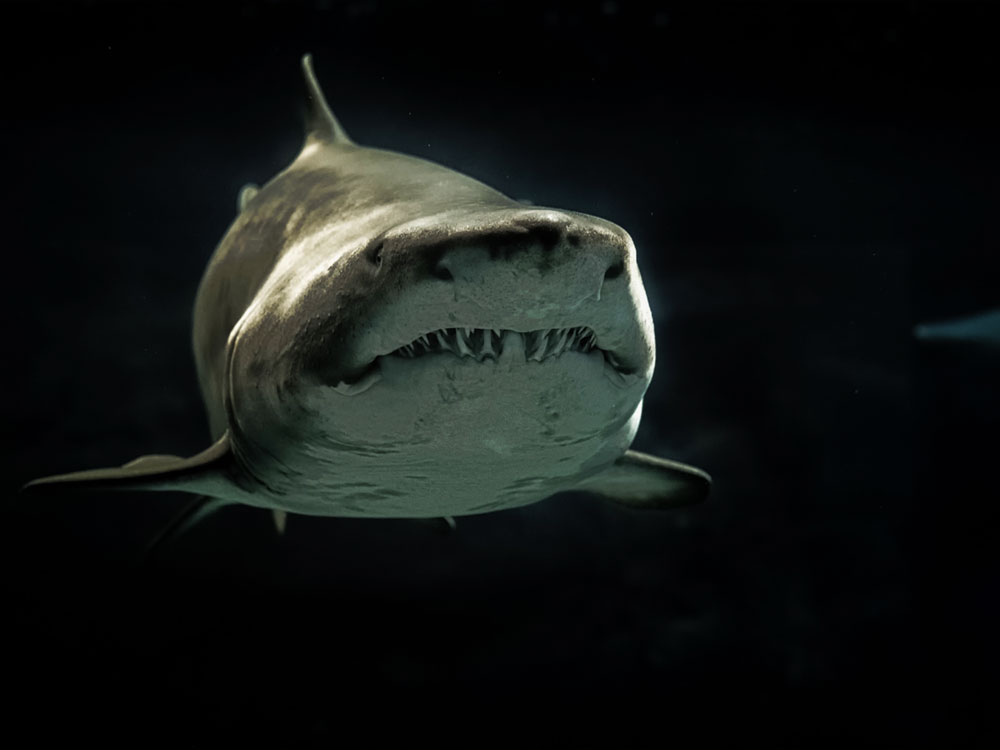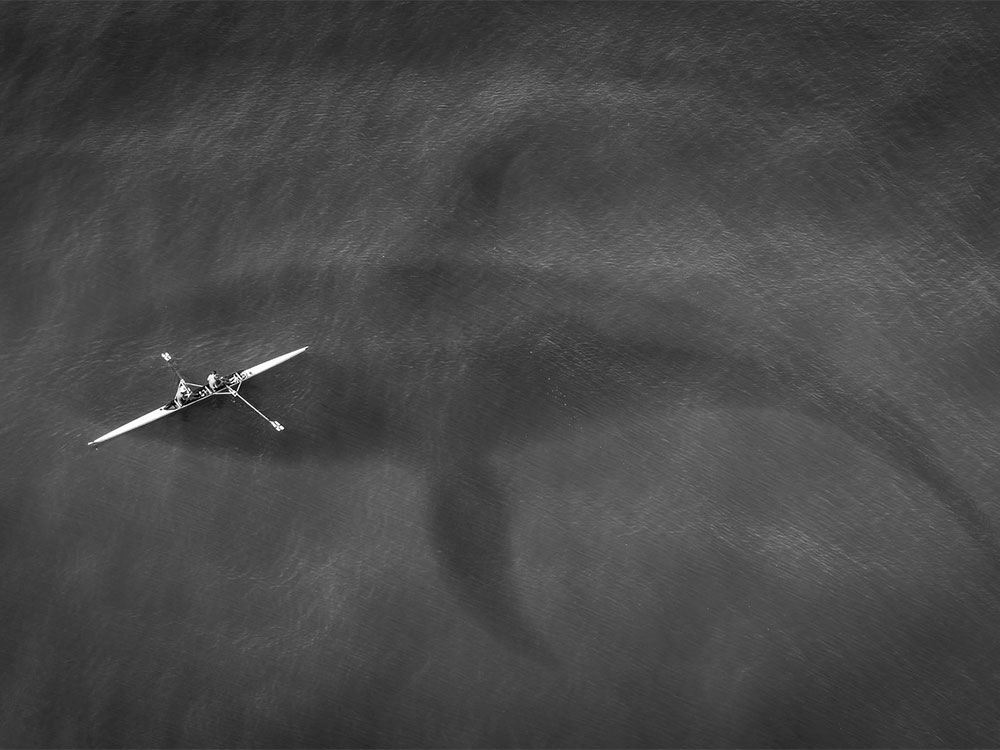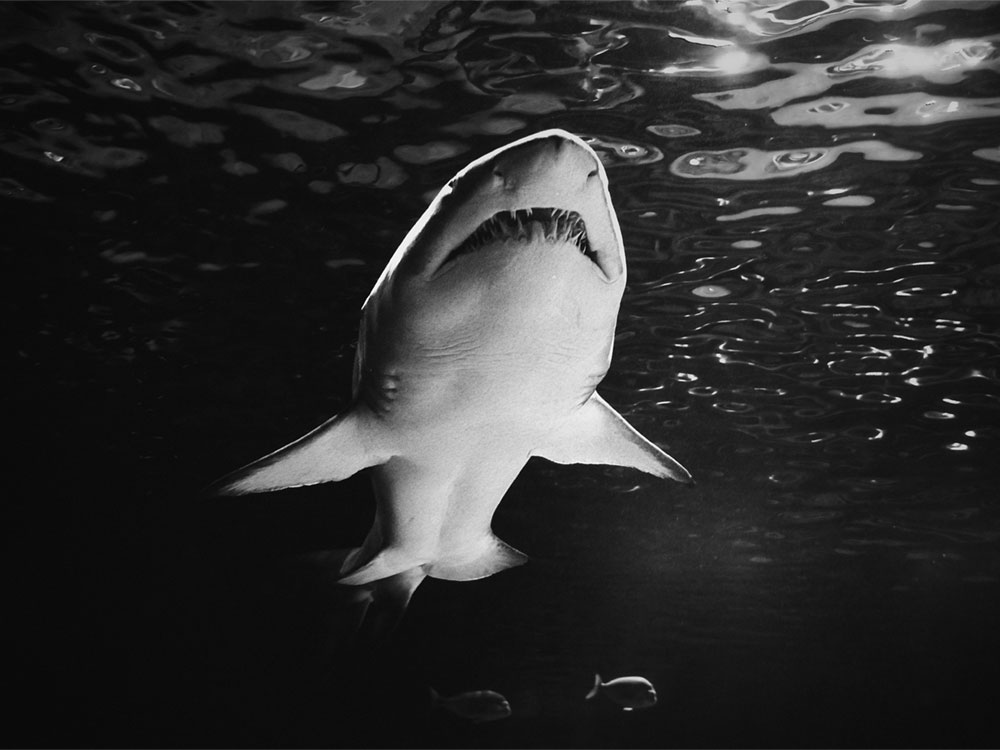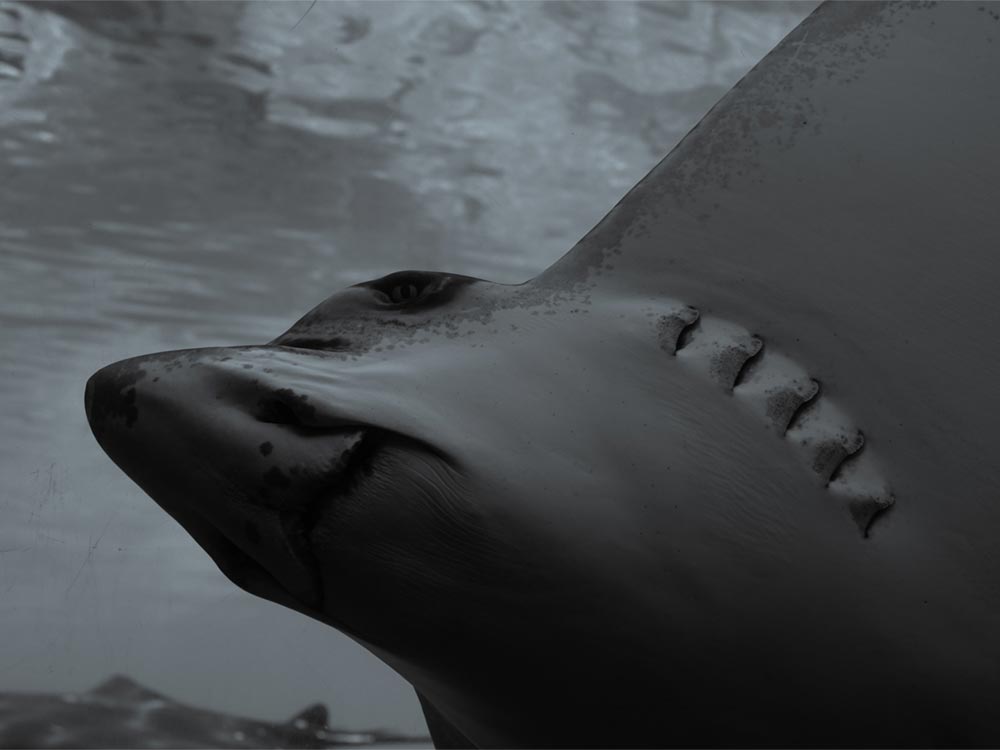The Black Demon: Prehistoric Predator or Misidentified Species?
by Katherine Karkkainen, June 2023

There may be a monster of Biblical proportions prowling the murky depths of the Sea of Cortez, inspiring terror among surfers and beach-goers and frightening fishermen who catch a glimpse of it from their boats.
The legendary sea monster is said to be as inky and black as the night sky, with a mouth filled with rows of razor-sharp teeth designed for tearing apart flesh. Its shape resembles that of a great white shark, yet eyewitness reports spanning hundreds of years indicate that this creature boasts a notably larger size, with some accounts suggesting that it grows large enough to swallow a whale whole. The unidentified creature’s appearance and reputation has garnered it the name, El Demonio Negro, or “The Black Demon.”
What is The Black Demon?
While the Baja California Peninsula is home to an array of marine life ranging from krill-eating whales to adept predators like sharks and dolphins, The Black Demon has made a name for itself as a creature seemingly unknown to science. Legends say The Black Demon is an enormous black shark in the Sea of Cortez (the Gulf of California), between 20 and 60 feet long, who terrorizes Mexican fishermen.
Eyewitnesses such as boaters and fishermen tend to report seeing only the tip of its tail or a dorsal fin before the appendage suddenly slips beneath the waves and out of view as quickly as it appeared.
Some witnesses include more harrowing details in their accounts of The Black Demon, such as the sensation of their boat being struck by something large during the encounter. Few claim to have seen the monster in its entirety, but many attest to seeing what can only be described as a supernaturally huge shark with dark coloration that can disappear beneath the water’s surface in a matter of moments.
Return of the Megalodon?
For some of the locals that live near the stretch of waters that span California and Mexico, however, the monstrous shark is all too real. For others, the animal not only exists, but it potentially marks the return of the Megalodon or Otodus megalodon, an ancient species of mackerel shark thought to be long extinct.
The Megalodon first hit the fossil record around 23 million years ago, living throughout the Early Miocene Epoch to the Zanclean Age of the Pliocene Epoch. For millions of years, it terrorized much of the world’s oceans, where it preyed upon large seals, sea turtles, and even whales. As far as size went, the species could reach lengths from 40 to almost 70 feet in length–making it one of the largest fish to ever inhabit the Earth.
Current scientific data suggests that the Megalodon died out at least 3.6 million years ago, and marine biologists attest that the modern world’s oceans would not make a suitable habitat for the species today. Yet, despite these assertions from the scientific community, people continue to report sightings of unearthly large sharks in the waters of the Baja California Peninsula. So, what exactly are eye-witnesses seeing, if anything?
Science remains unconvinced that the Megalodon still exists, and odds are stacked against the idea that a great white shark could grow to lengths beyond 25 feet. However, this does not necessarily mean that those who claim to witness El Demonio Negro are simply making up stories for attention. There is a great possibility that a very real animal is being seen and mistaken for a massive predatory shark — but the creature in question may be far less menacing than it is perceived to be.
Is the Black Demon Shark Real?
The Black Demon shark is probably not real. Since no verifiable proof of The Black Demon’s existence has ever come to light, the creature’s true identity may never be fully understood. Yet those who insist upon the creature’s existence may never be deterred by the theories offered by scientists and skeptics. But, are there massive documented sharks in the coastal waters of California and Mexico? Yes. Here are a few possible theories on real-life encounters with The Black Demon:

Whale Shark
There is, in fact, a known shark species that can grow beyond 20 feet, and it just so happens to inhabit the Sea of Cortez. It is known as Rhincodon typus or the whale shark, a filter-feeding gentle giant that eats tiny shrimp and plankton — a far cry from human flesh. The whale shark is equipped with a large, wide mouth fit for sucking up small organisms through its gill rakers. As alarmingly huge as this behemoth’s mouth may be, large animals are not on its menu.
Though it usually sports spotted patterns on its skin, the whale shark can be noticeably dark and even black in color under certain lighting conditions. It stands to reason that fishermen making trips out the sea at night could see just a portion of the animal–such as a tail or dorsal fin — and mistake it for belonging to a big, dark, and far more dangerous predatory shark.
This is an especially likely scenario considering most people would be rightfully startled to see a large, ambiguous shape in the water, and fear is well-known to distort how humans visually perceive their surroundings. Amped up on adrenaline, an eight-foot-long shark could easily become 20 feet or more in length, and a 20-foot shark could perhaps be mistaken for an even greater size.

Great White Sharks
Ranking right behind the whale shark, great white sharks are the second-largest shark species that inhabit the Sea of Cortez. Since reports of the Black Demon tend to point to a shark that resembles great whites, this could be a potential candidate for the creature’s identity.
There have been fully documented accounts of large great whites in the region, such as the two-ton specimen that was hauled onto the shores near Guaymas by fishermen in 2012. However, individuals never seem to grow past 20 feet in length, and shark scientists theorize this is due to constraints on the animal’s liver that would keep it from reaching larger dimensions.

Giant Manta Ray
Another theory includes the possibility that eyewitnesses are simply seeing Mobula birostris, or the giant manta ray. These rays can grow up to 30 feet in length, with their wingspans reaching a comparable size. Though they look nothing like sharks while viewed in their entirety, a passing glance at a giant manta ray’s fin, as it glides through the water, could easily be mistaken for the tip of a large shark’s fin or tail.
The Black Demon Hits the Big Screen
The Black Demon splashed into theaters with a film debut on April 2023 to poor reviews. The mystery/action movie centers on an oil inspector named Paul Sturges (Josh Lucas), who goes to Baja, California, with his wife and two children. So as expected, they end up stuck on this old oil rig, and there’s this huge shark called The Black Demon circling in the water nearby. The group must find a way to return to shore to survive. If you’re into campy B-movie action, watch The Black Demon on Prime Video, Vudu, Apple TV, and Google Play.
Despite the lack of hard evidence, the Black Demon’s legacy will likely live on in the tales of fishermen for years to come — and perhaps make some a little less likely to venture out into deeper water.